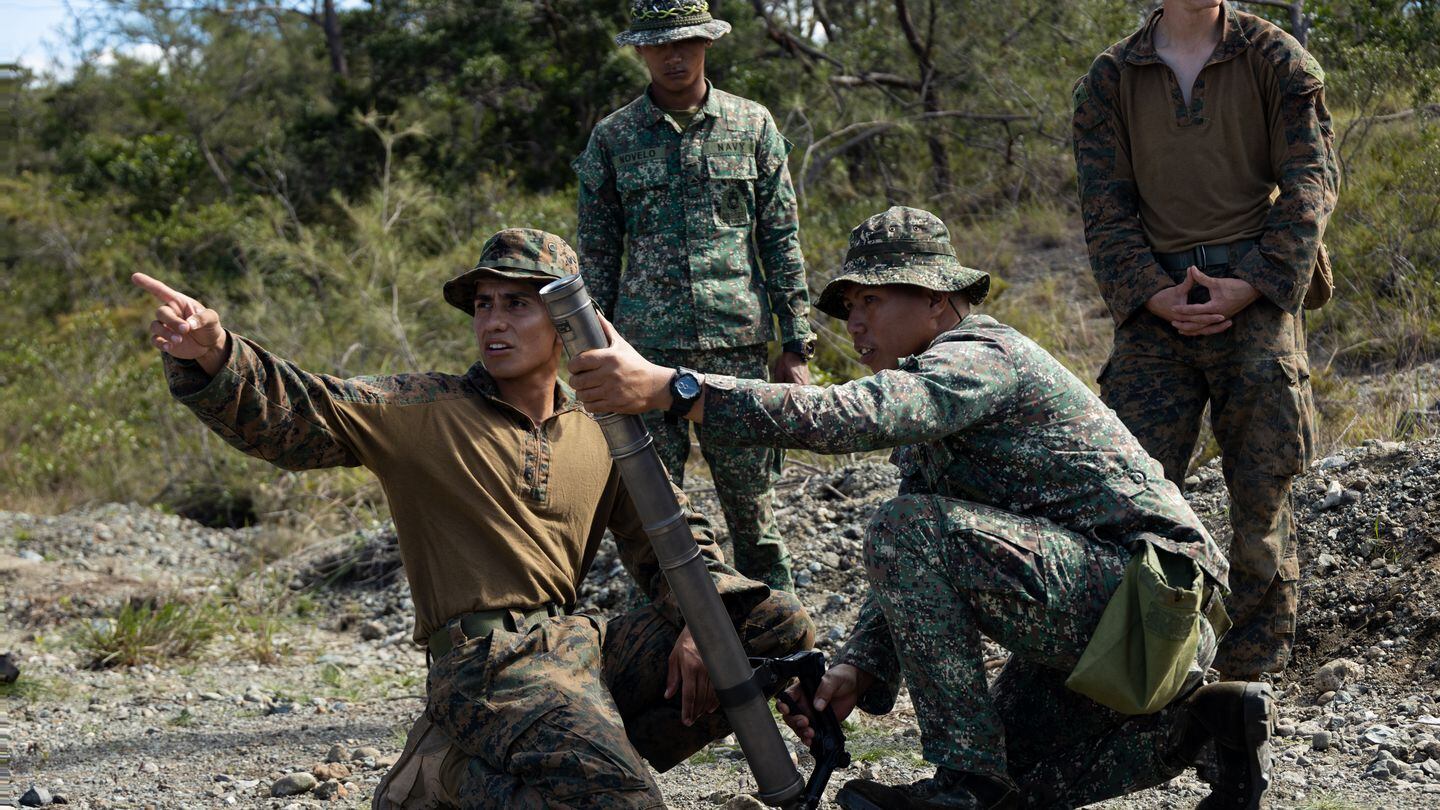NATIONAL HARBOR, Md. — The Corps’ top operations general is seeing Pacific allies copy some of the new littoral-based war-fighting concepts that the service’s has developed to counter China in the region.
Speaking at the Navy League’s Sea-Air-Space conference here on Monday, Lt. Gen. James Bierman, deputy commandant for plans, policies and operations, laid out challenges the U.S. military faces in the Western Pacific and moves the Marines are making to address those gaps.
The three key challenges are “time, space and access,” Bierman said.
“Much as they might like to think so, the (People’s Republic of China) is not 10-feet tall,” Bierman said. “That’s not to say they’re not worthy of respect, and we do respect them, they’re working very hard, they’re building lots of capacity, but they struggle with doubt and uncertainty and we’re purposefully campaigning and posturing to maintain and magnify their doubt and unease.”
Marines build two littoral regiments to fight peer threats with a third on the way
To meet those challenges, Bierman said, the Corps has focused efforts on its units both already within the U.S. Navy fleet and those inside of the first island chain and “weapons engagement zone.”
The island chain refers to a string of islands from the Kuril Islands in the north, sweeping south through Okinawa, Japan, Taiwan and the Philippines, paralleling Russian, North Korean and Chinese shores.
Partner and allied nations in that same chain are training alongside Marines in new ways, focused on detecting, targeting and striking enemy naval vessels.
“They’re very much seeing the problem the same way,” Bierman said. “Which is how in distributed naval terrain do you sense and make sense; do you synchronize and coordinate in combined operations. How do you establish the right linkages for command and control?”
The Marines think they have the answer: the Marine littoral regiment.
In recent years, the Corps has developed the littoral regiment as purpose-built for littoral combat, or fighting in the shallower reaches where land, islands and archipelagos meet ocean.
The 3rd Marine Littoral Regiment operates out of Hawaii. The 12th Marine Littoral Regiment was redesignated in 2023 in Okinawa, Japan, and another regiment is planned to form in Guam in 2027.

The regiments hold 2,000 Marines each, about the size of a Marine expeditionary unit, but with different capabilities. They have fewer infantry but contain their own air control and air defense units, a medium missile battery instead of conventional artillery and more advanced logistics capabilities.
Bierman said that military partners and allies in South Korea, Japan, Taiwan and the Philippines are either copying elements of the littoral combat concept or were working toward these moves even as the Corps began developing it.
Following the panel discussion, he told Marine Corps Times that each nation is taking its own approach, some weighting the units more toward sensing capabilities, others toward lethal strike capabilities. He declined to discuss specific equipment, platforms or capabilities by country.
The three-star stressed that success in any potential conflict will involve a combination of Marine littoral regiment assets and more traditional formations, such as the Marine expeditionary unit or other capabilities from the Marine expeditionary force.
The 3rd Marine Littoral Regiment has been participating in various exercises, chiefly with the Philippines’ armed forces, since 2022. The 12th Marine Littoral Regiment, still under construction, will primarily work with the Japanese military.
The Japanese military developed its first amphibious rapid deployment brigade in 2018. In March, it activated the 3rd Regiment within the brigade for defense of its southwest region, U.S. Naval Institute reported. It also formed and deployed an electronic warfare unit to Yonaguni Island, Japan, in March.
Bierman previously served as commanding general of III Marine Expeditionary Force, the only forward-deployed Marine expeditionary force, and lead force in the Pacific.
“Our allies and partners are all in,” Bierman said. “They are feeling the heat, they’re tired of getting pushed around in their own backyards.”
In January, the Philippines announced its Comprehensive Archipelagic Defense Concept, a shift to join its army, air force and navy in an external security focus instead of its previous concentration on external security. The move has been described as a move to counter Chinese military aggression and incursion into the nation’s territorial waters.
Bierman noted an uptick in various military exercises. The large-scale, multinational naval exercise Rim of the Pacific, the U.S.-Australia annual Talisman Sabre exercise and the U.S.-Philippines exercise Balikatan have grown steadily in size and scope in recent years.
And those exercises are not simple live fires. The Marine littoral regiment is working sensing and ship targeting, passing data and conducting command and control alongside host nation partners.
Bierman emphasized the realism of the exercises and their effect on adversaries.
“The exercise the operations we’re doing, everything we walk back from an existing war plan,” Bierman said. “It is a rehearsal of an existing war plan with the actual joint partners, allies and partners we will fight with more often than not on the terrain we will operate with at the specific high risk time of year.”
Using these exercises to highlight how the U.S. and its partners are working on shared aims for another target ― deterrence.
“Everything we do in INDOPACOM is done with an eye toward cognitive impact on potential adversaries,” Bierman said. “Nothing sends a message of deterrence and unsettles our adversaries like true interoperability.”
from Defense News https://ift.tt/gNjqCnJ
via IFTTT

Post a Comment